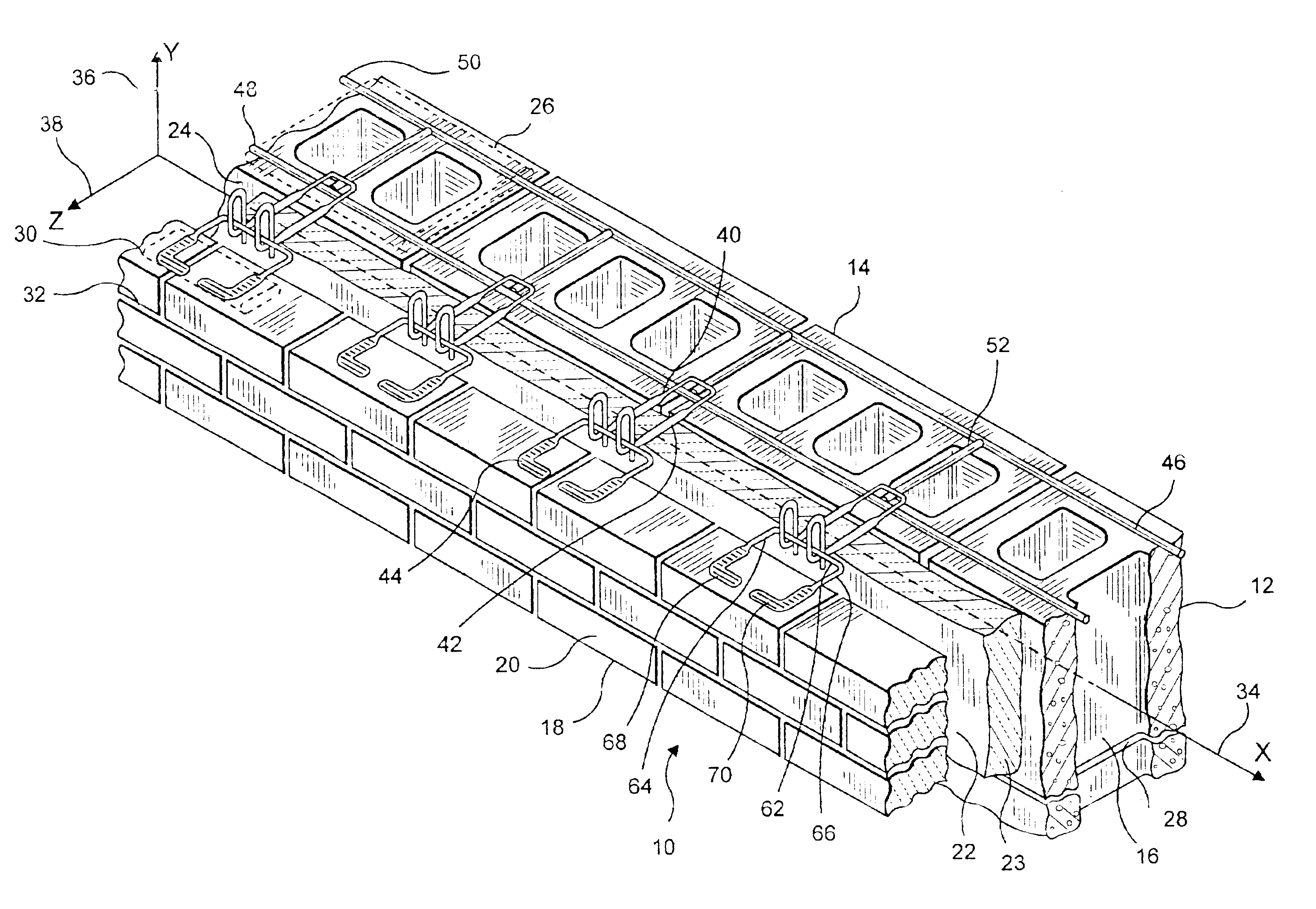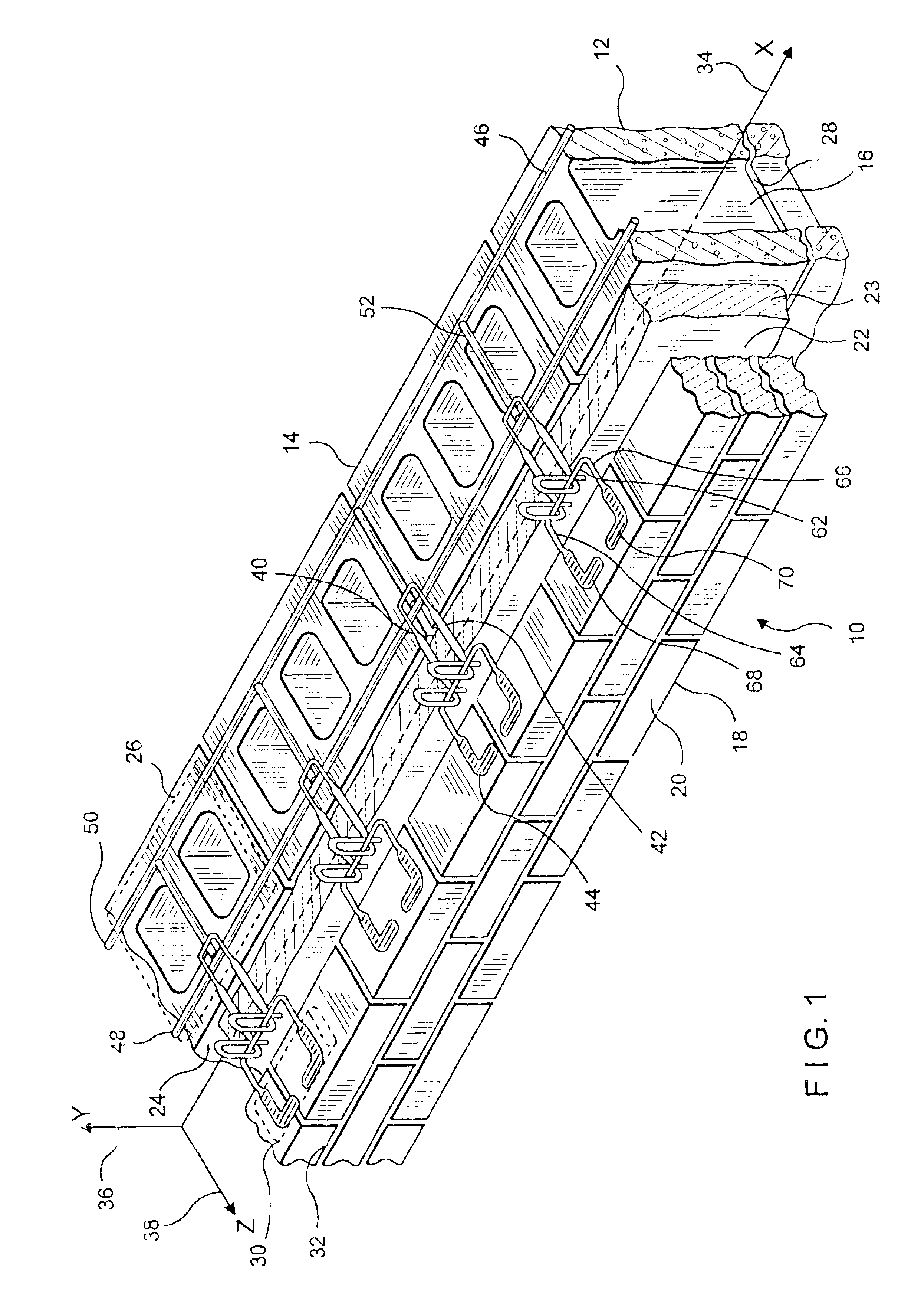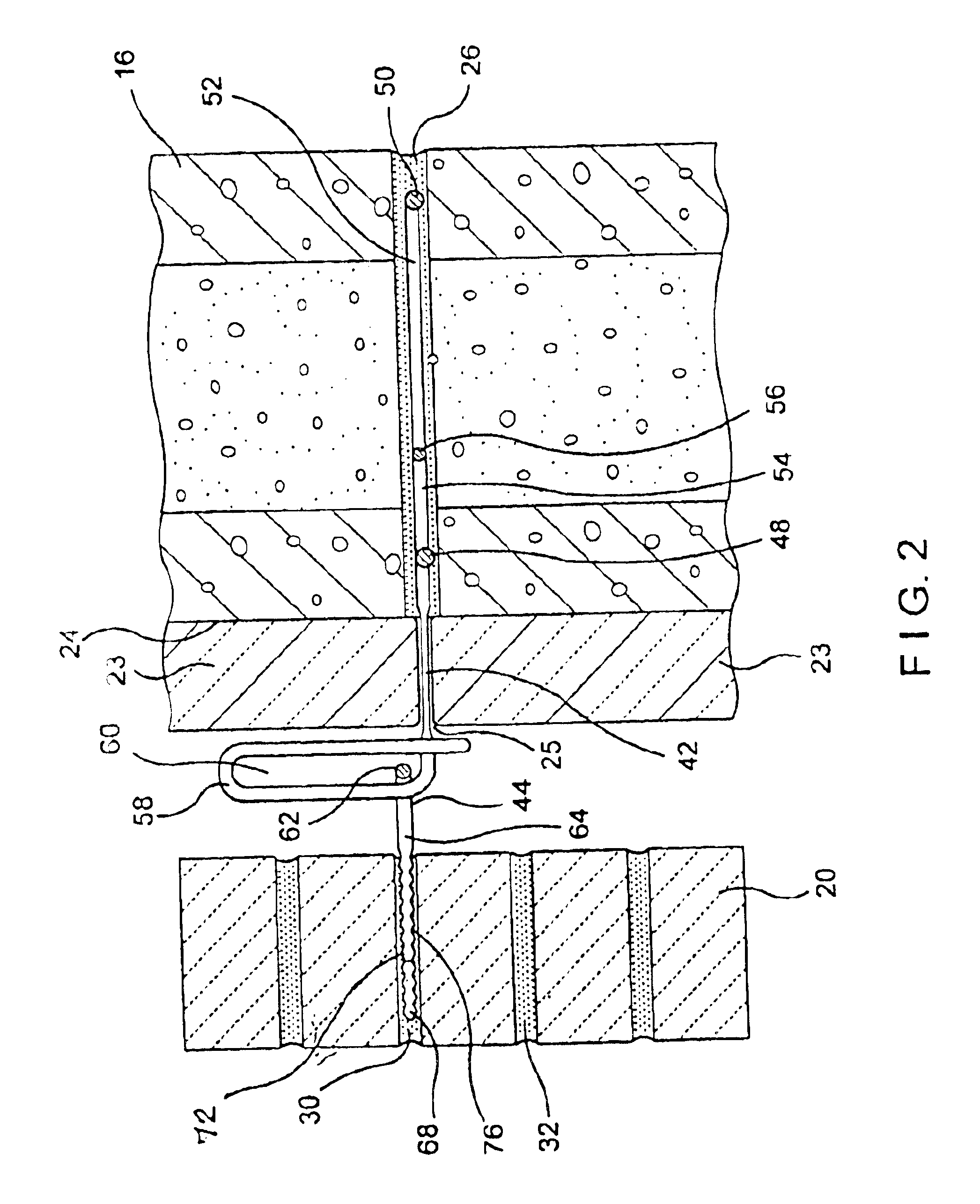True-joint anchoring systems for cavity walls
- Summary
- Abstract
- Description
- Claims
- Application Information
AI Technical Summary
Benefits of technology
Problems solved by technology
Method used
Image
Examples
second embodiment
In the second embodiment, and referring now to FIGS. 6 and 7, the details of the wall reinforcement 146 and wall anchor 140 of the above-described arrangement of wire formatives are shown. For the true joint, swaged into side wire 148 of wall reinforcement 146 are indentations 178 and 180 at attachment sites 182 and 184, respectively; and into intermediate wire body indentations 186 at attachment sites 188 and 189.
first embodiment
During assembly, the two components—the wall anchor 140 and the wall reinforcement 146—are fusibly joined at attachment sites 182, 184 and 188 and 189 under heat and pressure. Upon assembly, the true joints at the attachment sites 182, 184,188 and 189 have a height no greater than the diameter of the wire of wall anchor 140. Thus, for example, if the 0.187-inch diameter wire is employed for all components, upon insertion of the assemblage into bed joint 126 an equal height of mortar would surround the wall reinforcement 146 and the insertion end of the wall anchor 140. As in the first embodiment, because of the flatness of the combined wall reinforcement and wall anchor assemblage, the ability to maintain verticality of the inner wythe is enhanced.
During the cold working of system components in addition to the swaged indentations, the insertion end of anchor 144 is compressively reduced in height. As described in a prior patent of the present inventors, namely, Hohmann et al., U.S. ...
PUM
 Login to View More
Login to View More Abstract
Description
Claims
Application Information
 Login to View More
Login to View More - R&D
- Intellectual Property
- Life Sciences
- Materials
- Tech Scout
- Unparalleled Data Quality
- Higher Quality Content
- 60% Fewer Hallucinations
Browse by: Latest US Patents, China's latest patents, Technical Efficacy Thesaurus, Application Domain, Technology Topic, Popular Technical Reports.
© 2025 PatSnap. All rights reserved.Legal|Privacy policy|Modern Slavery Act Transparency Statement|Sitemap|About US| Contact US: help@patsnap.com



